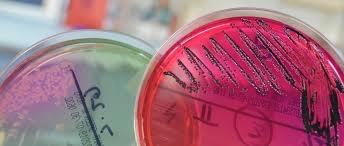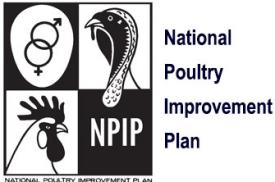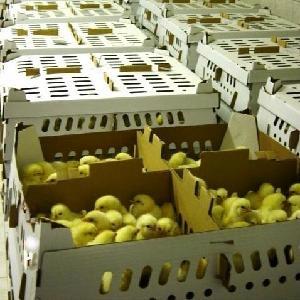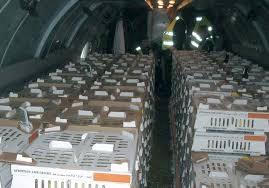 Nature Communications published an article in 2021 purporting to show that global dissemination of Salmonella Enteritidis (SE) could be attributed to world trade in chicken breeding stock. The publication was prepared by the Center for Food Safety of the University of Georgia and essentially involved data mining. The authors evaluated 30,000 SE genomes from 98 nations collected over the period 1949 through 2020. From the calculations performed, the article presented a hypothesis that primary breeders of chickens were responsible for the dissemination of the pathogen through sale and export of infected breeding stock. This conclusion was based on their demonstration of “concordant patterns of international trade of breeding stock and a quantitatively established role of the trade in the geographic dispersal of genetically similar strains of SE”. The study represented an exercise in desk-top epidemiology conducted in a vacuum but only rising to the level of a hypothesis lacking practical substantiation.
Nature Communications published an article in 2021 purporting to show that global dissemination of Salmonella Enteritidis (SE) could be attributed to world trade in chicken breeding stock. The publication was prepared by the Center for Food Safety of the University of Georgia and essentially involved data mining. The authors evaluated 30,000 SE genomes from 98 nations collected over the period 1949 through 2020. From the calculations performed, the article presented a hypothesis that primary breeders of chickens were responsible for the dissemination of the pathogen through sale and export of infected breeding stock. This conclusion was based on their demonstration of “concordant patterns of international trade of breeding stock and a quantitatively established role of the trade in the geographic dispersal of genetically similar strains of SE”. The study represented an exercise in desk-top epidemiology conducted in a vacuum but only rising to the level of a hypothesis lacking practical substantiation.

The authors placed undue reliance on data mining and mathematical analysis but failed to appreciate that had the infection been present in primary-level egg and broiler production flocks and their progeny, detection would have been established through the National Poultry Improvement Program developed to eradicate Salmonella pullorum. This Program was established in the late 1920s as a regional New England initiative, then became a national program in 1935 and later passed to the NPIP. The NPIP SE program was initiated in 1989 following recognition of the infection as both a vertically transmitted disease responsible for chick mortality and as a foodborne infection.
Contrary to the authors statement “… the actual prevalence of Salmonella Enteritidis in breeding stocks remains little surveyed or published” ... the authors are apparently unaware of the intensive and on-going testing of primary breeding stock to meet the NPIP SE Clean certification requirements for the sale and distribution of breeding to US and international customers in effect for nearly 30 years. To present a balanced and factual situation the authors could have consulted specialized avian health professionals participating in the NPIP programs, diagnosticians in authorized NPIP diagnostic laboratories, and Federal or State Animal Health officials involved in poultry programs. In addition, the authors were not aware or omitted to acknowledge the long-standing USDA/NPIP SE Clean requirements required for the export all primary breeding stock, and the zero-tolerance policies in place by primary breeders and chick suppliers in the U. S. and around the world. A zero tolerance policy requires that any shipments of breeding stock testing positive for SE would be destroyed and liabilities would include immediate shipping of clean flock replacements, and reimbursement of all expenses associated with the disposal of infected birds including cleaning and disinfection.
S. and around the world. A zero tolerance policy requires that any shipments of breeding stock testing positive for SE would be destroyed and liabilities would include immediate shipping of clean flock replacements, and reimbursement of all expenses associated with the disposal of infected birds including cleaning and disinfection.
It is also clear that the authors ignored the reality that poultry primary breeding flocks in the US are maintained under the most stringent biosecurity conditions, under the mandated care and supervision of specialized and licensed poultry veterinarians who also are USDA Accredited to ensure compliance with the official certification requirements for domestic and international trade of breeding stock. These biosecurity and surveillance standards provide a very different reality than the one suggested by the Nature Communications report incorporating critical statements suggesting that primary breeding programs are characterized by little surveillance, reporting, and lack of external inspection.
In conducting the study on which the Nature Communications article is based, the authors failed to consider alternative routes of infection and the fact that despite supplying breeding flocks at the great-grandparent and grandparent levels that were free of SE, multipliers in many nations failed to maintain the standards of biosecurity necessary to prevent vertical transmission from parent flocks to commercial progeny. This resulted in outbreaks of egg-borne SE, the most recent having been documented in Poland. Dissemination of SE by flock multipliers cannot be laid at the door of primary breeders.
Concerned over negative reactions to the Nature Communications article that implied lack of transparency and surveillance by primary breeders, a succinct rebuttal was prepared under the authorship of scientists and avian health professional that is reproduced below:-
Global spread of Salmonella Enteritidis via centralized sourcing and international trade of poultry breeding stocks” (Nature Communications 12:5109, 2021)
Authors and affiliations:
- Timothy J. Johnson, PhD, Department of Veterinary and Biomedical Sciences, University of Minnesota, 1971 Commonwealth Ave., 205 Veterinary Science, Saint Paul, MN, USA 55108
- Richard K. Gast, PhD, US National Poultry Research Center, USDA-ARS, 950 College Station Road, Athens, GA, USA 30605
- Jean Guard, DVM, PhD, US National Poultry Research Center, USDA-ARS, 950 College Station Road, Athens, GA, USA 30605
- Gregorio Rosales, DVM, MS, PhD, DACPV, Poultry Health Consultant, Athens, Alabama
- Daniel Wilson, DVM, Independent Poultry Veterinarian, Indianapolis, IN
Summary: A publication in Nature Communications by Li et al. (Li et al., 2021) postulates that observed genetic relatedness among international Salmonella enterica serovar Enteritidis (SE) isolates from poultry is attributable to the dissemination of infected breeding stock, and that it was the fundamental cause of epidemic human illness from consuming contaminated eggs. As veterinarians and microbiologists who have contributed to the National Poultry Improvement Plan (NPIP), the principal US program for preventing distribution of SE from poultry breeding stock, we believe this paper does not sustain its principal conclusion through evidence.
The NPIP established the US SE Clean control program for egg-type breeding chickens and their participating hatcheries in 1989 to prevent infection of commercial egg layer pullets, and the program was extended to meat-type chickens. For nearly 30 years, there has been zero  tolerance for SE in shipments of primary breeding stock, and in many cases this requirement extends to any Salmonella serotype.
tolerance for SE in shipments of primary breeding stock, and in many cases this requirement extends to any Salmonella serotype.
In making broad conclusions, the authors do not adequately acknowledge the long-standing NPIP SE Clean requirements. In addition, the authors’ implication that SE control and certification programs failed does not account for the possibility that international distribution happened before programs were implemented. Surveillance for SE was not routine before its recognition as a public health problem. Only circumstantial evidence, and not direct evidence, is provided by the authors to support these conclusions.
There are diverse potential sources for introduction of SE into poultry production systems. Numerous studies have established that rodents, wild birds, water sources contaminated with human sewage (Kinde et al., 1996), lack of hygiene in poultry houses and hatcheries, and infected farm workers are all potential sources of SE. Mouse populations have been widely documented as both an intermediate reservoir and as transmission vectors (Guard et al., 2020). The authors do not acknowledge these many potential sources and times of introduction of locally indigenous SE strains into poultry production systems, making the inaccurate assumption that SE-infected broiler or layer flocks are inevitably a consequence of importation of SE-infected breeding stock.
The argument posed by the authors ignores previous documentation that selection by the avian host for strains possessing the ability to infect and persist in poultry results in a genetically narrow range of isolates (Gantois et al., 2009). Algorithms applied to biological issues require controls rooted in biology to avoid mathematical oversimplification of inherently complex phenomena.
We do believe the researchers have used bioinformatics to thoroughly assess genomic diversity of SE and this approach is especially useful for providing information from large datasets. The information generated will advise research for the future that will help all of us protect the consumer. Collaborative efforts should be used between scientists in government, academia, and industry to directly address these questions. Our shared commitment to providing safe food can be improved by application of bioinformatics to identify sources of SE in the environment of poultry that persist to this day.
References:
Gantois, I., Ducatelle, R., Pasmans, F., Haesebrouck, F., Gast, R., Humphrey, T.J., Van Immerseel, F., 2009. Mechanisms of egg contamination by Salmonella Enteritidis. FEMS Microbiol Rev 33, 718-738.
Guard, J., Cao, G., Luo, Y., Baugher, J.D., Davison, S., Yao, K., Hoffmann, M., Zhang, G., Likens, N., Bell, R.L., Zheng, J., Brown, E., Allard, M., 2020. Genome sequence analysis of 91 Salmonella Enteritidis isolates from mice caught on poultry farms in the mid 1990s. Genomics 112, 528-544.
Kinde, H., Read, D.H., Ardans, A., Breitmeyer, R.E., Willoughby, D., Little, H.E., Kerr, D., Gireesh, R., Nagaraja, K.V., 1996. Sewage effluent: likely source of Salmonella enteritidis, phage type 4 infection in a commercial chicken layer flock in southern California. Avian Dis 40, 672-676.
Li, S., He, Y., Mann, D.A., Deng, X., 2021. Global spread of Salmonella Enteritidis via centralized sourcing and international trade of poultry breeding stocks. Nat Commun 12, 5109.
The authors of the Nature Communications paper concluded that “The evidence provided calls for further investigation, and potential intervention into the global spread of Salmonella from centralized origins at the pinnacle of poultry production” The risk of vertical SE transmission with the potential to become a threat to public health was recognized by primary breeders and regulators, and was the reason for the establishment and implementation of the USDA - NPIP SE CLEAN program, and the SE Clean federal certification requirement for primary breeding flocks that has been in place for nearly 30 years. Evidently, the authors were unaware of these programs and when they were established and highlighted the need for an intervention strategy that was initiated by the USDA/NPIP and the primary breeding industry rendering their suggestion moot.
It is this commentator’s considered opinion, that given the extent of resources both in equipment and personnel available to primary breeders, that the presence of SE would have been rapidly detected. Every effort would have been made to eradicate the infection in the various generational levels since the competitive nature of breeding and marketing grandparent and higher levels of stock and strict regulatory and customer requirements would have motivated action to prevent introduction and dissemination of the pathogen.
We hope scientists at the UGA's Center Food Service can become a partner with their knowledge and expertise to help identify sources of SE and develop approaches to help ensure food safety for the benefit of the poultry industry and consumers of poultry products.
Li, S. et al. Global spread of Salmonella Enteritidis via centralized sourcing and international trade of poultry breeding stocks. Nature Communications (2021) doi.org/10.1038/s41467-021-25319-7.